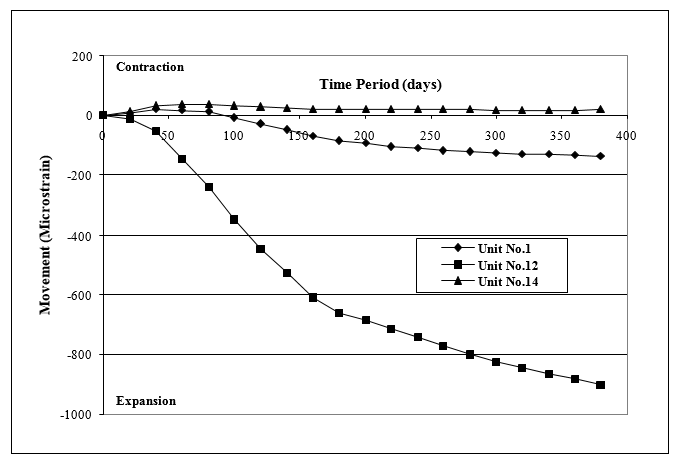A.Bremner1, J.J.Brooks1, J.P.Forth1 & P.R.Bingel2
ABSTRACT
This paper presents experimental data for Phase I of a research project investigating the behaviour of brickwork subject to imposed loading and restraint. Moisture movement strains of fired-clay masonry panels and their corresponding unbonded brick units are presented. Thirteen courses high by two brick wide single-leaf test panels were constructed using twenty different types of brick unit combined with a class (ii) mortar. Measurements were taken in the vertical and horizontal direction over a one-year period.
The magnitude of moisture movement strain was found to be linked to the moisture transport properties of the brick units, namely, initial rate of suction, porosity and compressive strength. Overall, the brick unit type dominated the pattern of moisture movement strains generated in the panels.
A significant difference was found to exist between the unbonded unit and panel movement measured in the vertical direction. Test panels generally exhibited an initial shrinkage followed by a long-term expansion, whereas corresponding unbonded units displayed relatively little continuous expansion. The results are of interest in assessing the feasibility and practicality of restraining clay brickwork, in particular the level of induced compression which may occur.
Keywords: Moisture Expansion Bricks Brickwork Movement
BMOIST02



